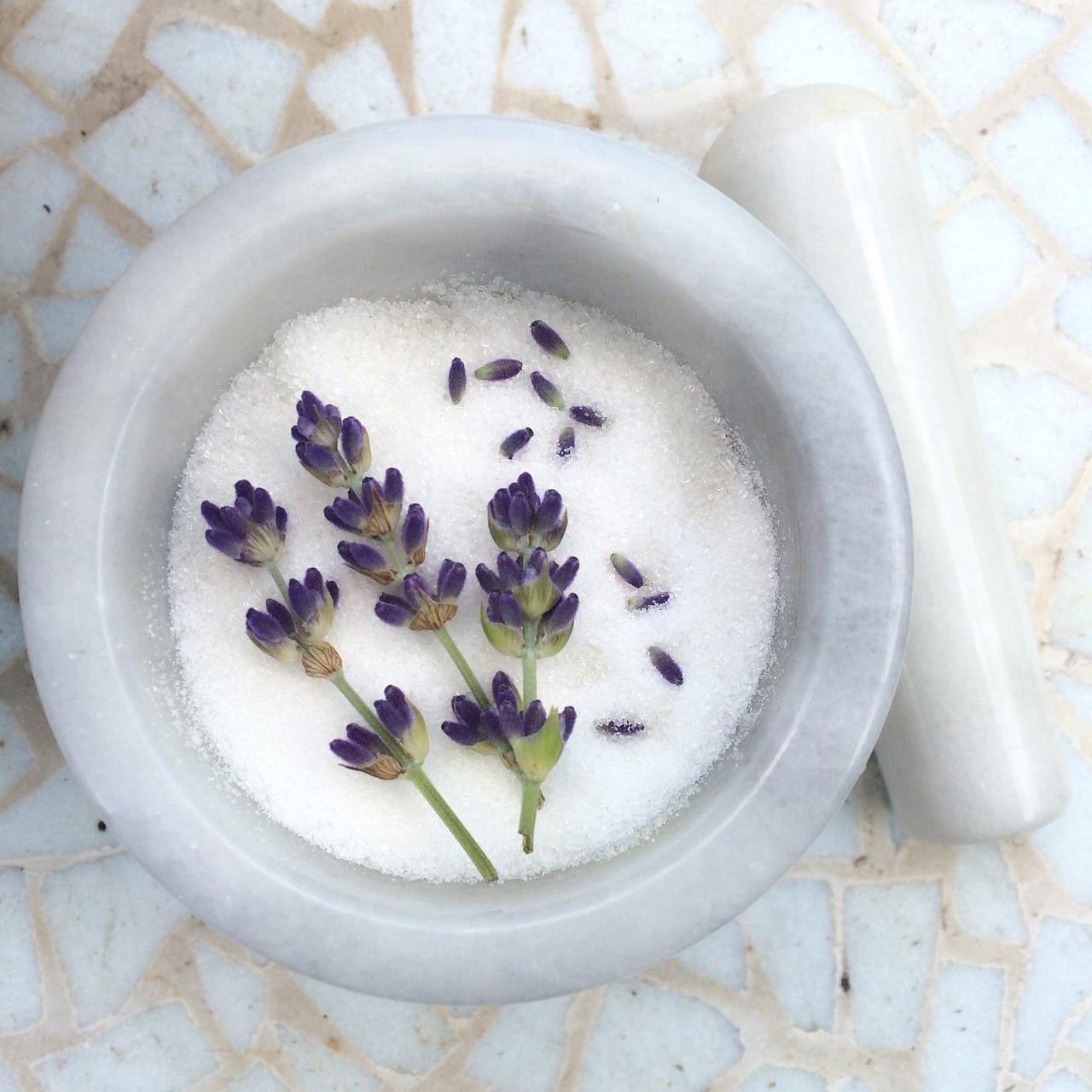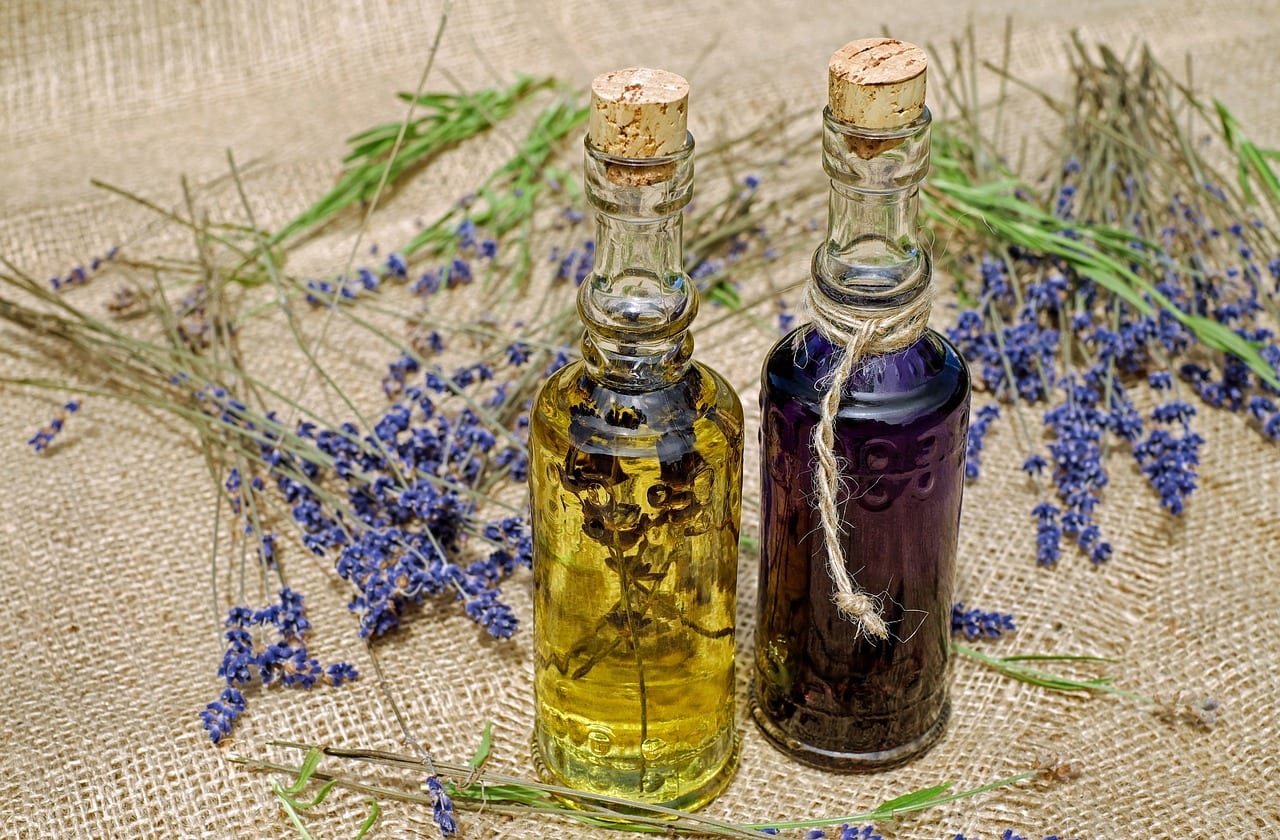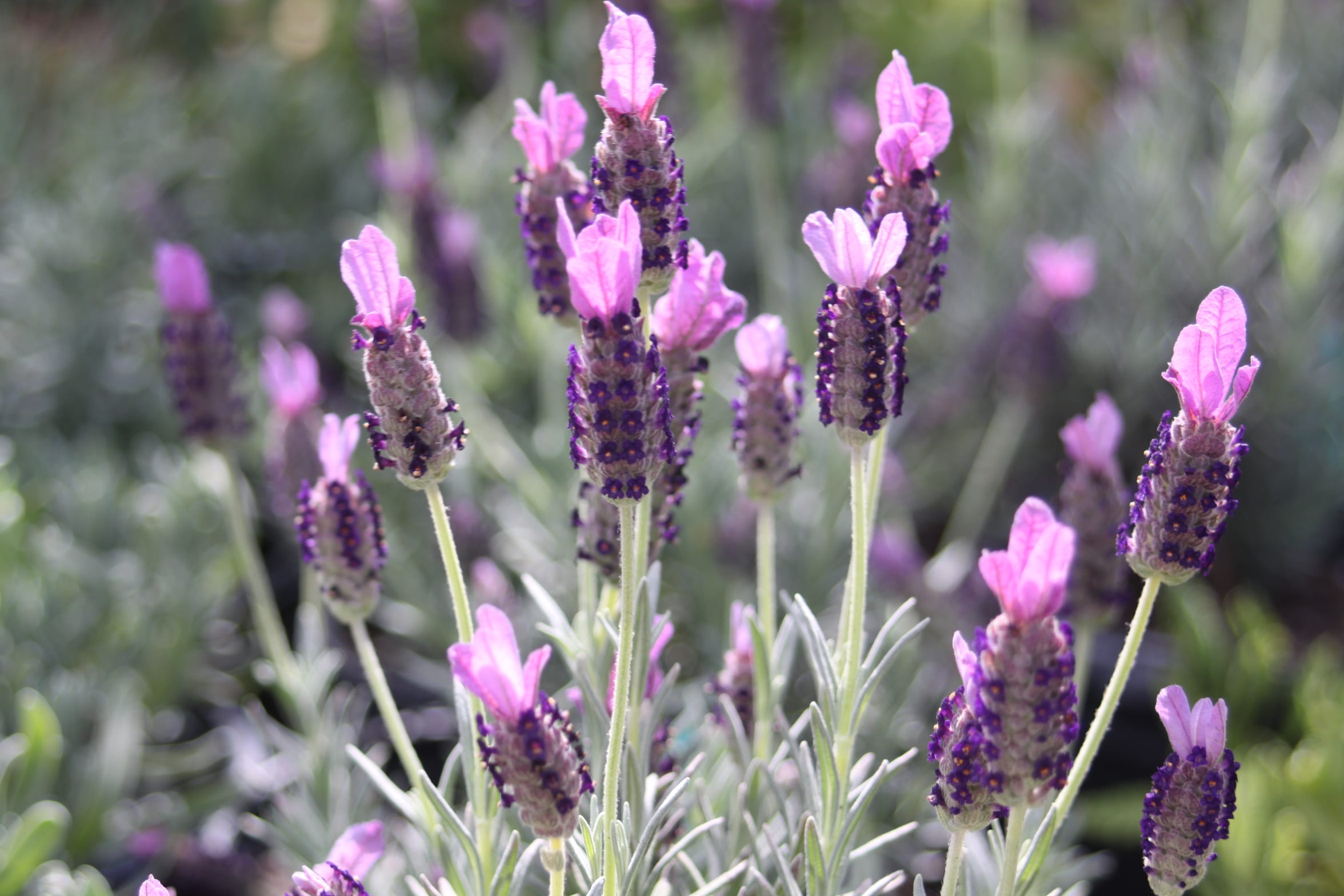Lavender is a wonderful choice for an herb to grow in San Antonio because it’s drought tolerant nature makes it a perfect fit for our city.
Lavendula angustifolia. There are about 27 species of the lavender plant, with the most popular varieties being English (Vera, Ht 2-3ft) and Spanish (Spike, Ht 1-3ft) because of their hardiness, and Munstead which is more compact, growing to only about 12-18 inches. Of course there are many others to choose from and with such variety, you can find one that is sure to fit perfectly in your San Antonio garden.
Lavender is seldom started by seed because it has a very long germination time. Rainbow Gardens in San Antonio is a great place to go choose your favorite lavender variety in person. Lightly rub your fingers across the leaves and smell each type. Although the base note is the same, each variety of lavender has a bit of a different aroma.
Care For Lavender
Whichever variety of lavender you choose, they pretty much need the same care when planted. Well draining soil and full sun are a must for lavender. They do not tolerate wet feet or shade. San Antonio gardeners rejoice; lavender is pretty drought tolerant once established. The first year you plant lavender, you need to water it regularly and you could even add a little compost to the soil of your inground plantings. Some San Antonio gardeners like to plant their lavender by a rock border or fence to give the flower stalks protection from any harsh winds that could bend and break the plant.
Lavender in Containers
If you choose to plant your lavender in a container, make sure you have the right size. The container should fit the root ball and give you a couple inches around all sides of it. Any bigger of a container and you risk overwatering your lavender which could result in root damage and death to your lavender plant. To help prevent this crime, choose a pot with at least one drainage hole. It would help to put an inch of loose gravel in the bottom of that pot before filling it with light weight, well-draining, potting mix. Water your lavender well at planting, and then subsequently when you stick your finger into the pot and it feels dry. Focus aiming water around the base of the lavender plant, keeping the foliage dry.
3 Uses for Lavender
1. Lavender for aromatic uses. San Antonio gardeners love to dry lavender and use the dried herbs in sachets to freshen up closets, put under pillows or in dresser drawers. Lavender makes a wonderful, fragrant addition to dried arrangements.
Drying tips for lavender:
- Harvest lavender when it is a dry day in San Antonio.
- Harvest lavender in the morning, after the dew has dried, when the oils are the strongest. For best results, harvest your lavender when the flower buds just start to open.
- Give yourself some nice long stems to work with. After you have a bundle, just wrap either a rubber band or cord around the middle to base of stems and hang them upside down in a warm spot that gets good air circulation.
- Hanging them where it is darker retains a little more of that pretty purple color but it takes a little longer to dry. It will take anywhere from 1-4 weeks to dry.

2. Lavender for Culinary Uses
Lavender is edible. The aromatic flowers of lavender can be brewed into a relaxing tea. Savory dishes get a unique twist when lavender is added. Fruit, shrimp, chicken can be skewered onto lavender spikes to infuse a floral flavor. Lavender sugar can elevate your next batch of sugar cookies or vanilla cake.
Lavender Sugar
- Get a dry, sterilized jar with a tight lid.
- Fill the jar with sugar a little less than half-way. Place dried lavender buds on top of the sugar and pour more sugar on top of them.
- Leave a little space so you can shake the contents in the jar.
- Let the sugar sit in the jar for about a month and you should have some delightful, lavender-infused sugar. The longer you leave it, the stronger the lavender flavor.

3. Medicinal Uses for Lavender
Essential lavender oil can be used in aromatherapy massage, in a salve to alleviate sunburn and irritated skin, and in an oil diffuser to help promote a sense of calm and tranquility. Lavender oil has been promoted as a helpful aid to reduce insomnia, anxiety, eczema, fungal infections, and nausea.
*You should always dilute essential oil in a carrier oil, like almond oil before applying it to the skin.
*You should also always be aware of any interactions herbs may have with any current medications you may be taking.

Lavender is an amazing herb to bring into your San Antonio landscape. Lavender can be nestled into your perennial gardens, herb gardens and container gardens. With very little maintenance, lavender will attract San Antonio pollinators of all types to your landscape. We think it’s time for you to give lavender a try.
The Happy Gardener, Lisa Mulroy


Are the growth requirements for lavender similar to that of rosemary? Could they be grown near one another in the same bed?
They are! These two herbs work great together for companion plantings. Remember that while both of these are very drought tolerant, their roots must be established first to develop the tolerance. Water deeply and thoroughly each time to encourage deep root growth, but allow soil to dry out some between waterings. Check soil moisture by sticking finger into soil. If top 2-3 inches dry, water.
Looking for pest deterrent plants, besides lavender, what else can I plant with it?
Are there specific pests you are looking to deter? Deer are considered a pest too….
In general, herbs like lemon balm, citronella, lemongrass, rosemary, etc… are plants with higher levels of essential oils.